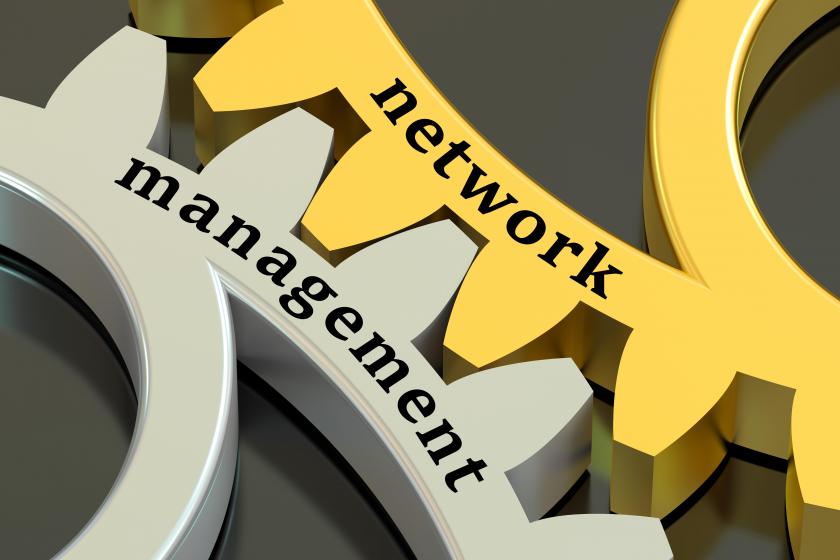Is It Time to Clean Up Your Network Management Tool Bench?Is It Time to Clean Up Your Network Management Tool Bench?
Network management tool sprawl is getting in the way of network management. It’s time for IT to do something about it.
September 4, 2023

Over the years, companies have piecemealed their network management tools purchases and have also created some of their own network management tools.
Some of these tools aren't being used, while others overlap. Collectively, they create a tool bench in disarray.
What steps can you take to streamline and become better organized?
#1 Take an inventory of what tools you’ve got
Between 2023 and 2028, the IT asset management software market is projected to grow at a rate of 11.4% compound annual growth rate (CAGR). Clearly, organizations are investing in IT asset management software that can track down all of the tools used in network management.
Some estimate that the number of different tools that IT uses for network monitoring alone is as high as 16 to 40. This tool accumulation over time creates tool sprawl.
To simplify your network management tool bench, the first step is to catalog all of the network tools that you have accumulated. This includes tools that IT uses centrally in the data center, as well as tools that may have been purchased and installed for use at the edge.
In many cases, your asset management tracking system can help with the location and identification of these network tools, but not every organization has asset management software. Even those that do still find cases where tools might have been purchased that are not in the asset management system. Situations like these will require IT to manually track down network management tools until all are accounted for, with an end goal of achieving a thorough inventory of total tools.
#2 Evaluate for tool duplications and overlaps
Since many network tools are purchased piecemeal, with some tools even being developed internally, there are bound to be overlaps in functionality.
In cases of duplicity or overlap, tools should be evaluated so you can make choices between which tools to retain and which tools to eliminate. During the course of this exercise, you are also likely to see gaps in tools (i.e., areas of network management that should addressed but aren't). These gap areas are the ones that should be planned for with the acquisition of new tooling.
#3 Consider outsourcing network management functions to the cloud
Today, 89% of companies use more than one cloud service for their IT, and each cloud comes with its own set of network and cloud management tools.
In most cases, these tools are free, and they are quite robust. The problem is that many IT departments fail to take advantage of all of the cloud network management tools that are available because there just isn't time to learn them all.
One option is to outsource cloud network management to the cloud provider itself. This reduces the number of cloud network management tools that IT has to learn and also ensures that appropriate network management gets done in the cloud.
#4 Get rid of shelfware tools
Almost every organization has dormant network software tools that have been sitting on the shelf because they have been replaced by something else. These tools should be sunsetted.
#5 Develop a network framework
So many times, a security breach or a network management issue arises, and IT looks to patch it with a one-off tool purchase because 1) the tool patch needs to be done right away, and 2) the IT budget is only large enough to support the one-off purchase. Over time, this piecemeal purchasing practice creates a labyrinth of overlapping tools that is difficult to manage and even more difficult to fit into an end-to-end network management framework.
To organize the tool bench, it is advisable to develop an overarching network architecture or framework that covers not only the topology of your end-to-end network but also the set of management tools that support it.
Going forward, this ensures a carefully orchestrated tool bench that reduces the number of tools that are duplicated or overlapping. This also simplifies IT network tools training and reduces the need for new skills since there will be fewer network management tools to learn.
#6 Consider tool and vendor consolidation
While it's inadvisable to "lock in" to a single network vendor, you can narrow the field of vendors to two that can provide a comprehensive, end-to-end set of network management tools. This gives you fewer vendor relationships (and tools), helping to control network tool sprawl.
There will also be a greater cohesiveness for your tool bench since purchasing from one or two vendors will bring greater tool integration.
The network management tools vendors that you select should have a holistic view of the network that coalesces well with your own overall network framework. The vendors should have roadmaps for future tools development. Finally, tools vendors should “be there” when you need them for tools support, training, and questions.
A final word about cleaning up your tool bench
A 2020 451 research study revealed that only 11% of organizations were satisfied with their network monitoring tools https://go.451research.com/2020-mi-IT-monitoring-meltdown-monitoring-tools.html.
One reason is that many of these tools were purchased piecemeal, without the thought of how well they integrated or fit into a full-bodied tool bench that can span the end-to-end management needs of their networks.
By approaching network tooling as holistically as organizations are beginning to approach their networks, IT can improve the effectiveness of its network management tools at the same time that it improves overall network management performance.
Related articles:
About the Author
You May Also Like




